This was my very first snow cat model, I built it already in 1974 as a teenager. It is probably the first model of this kind. Yes, it really did drive although with many short comings. The planned improvements never happened, especially as the Graupner PistenBully was released in 1981. With it I had my winter toy.
In spring 2011 I finally took care again of this historic model: it got a new chassis and tracks, and later the attachment carrier for the trailing roller was added.
The model in scale 1:8 of the Kässbohrer PistenBully has been built by Albert in his teenage years 1974/75. We are pretty sure that this is the first RC model of a snow cat worldwide. The first run was on March 29, 1975.
Due to the limited possibilities at this time the powertrain and the tracks were not very sturdy. The model did run, but it was quite clear after the first tests that improvements were necessary. These somehow got stuck, and it took 35 years before a new chassis and new tracks were built.
These rare pictures (bottom left and right) show the PB145D on March 29, 1975 with the first set of tracks, which had wooden square bars with ABS-stripes glued on top of them. These were glued with Pattex on the rubber bands. They for sure looked good, but fell off piece by piece after the first test runs. I then made new tracks consisting of bent aluminum profiles which were riveted on nylon bands.
I found these pictures by chance in May 2014 in the slide collection of my dad.
I was 14 years old on this picture.
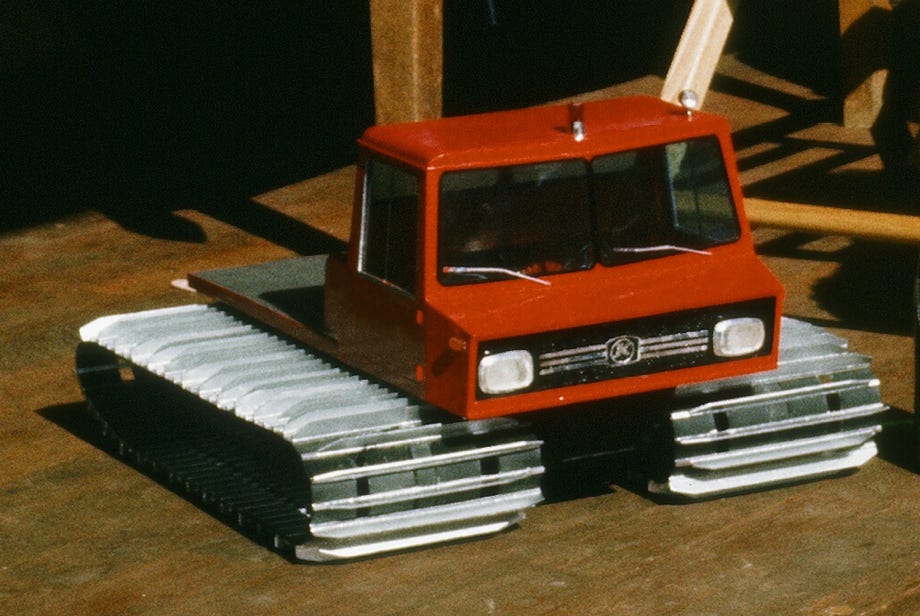
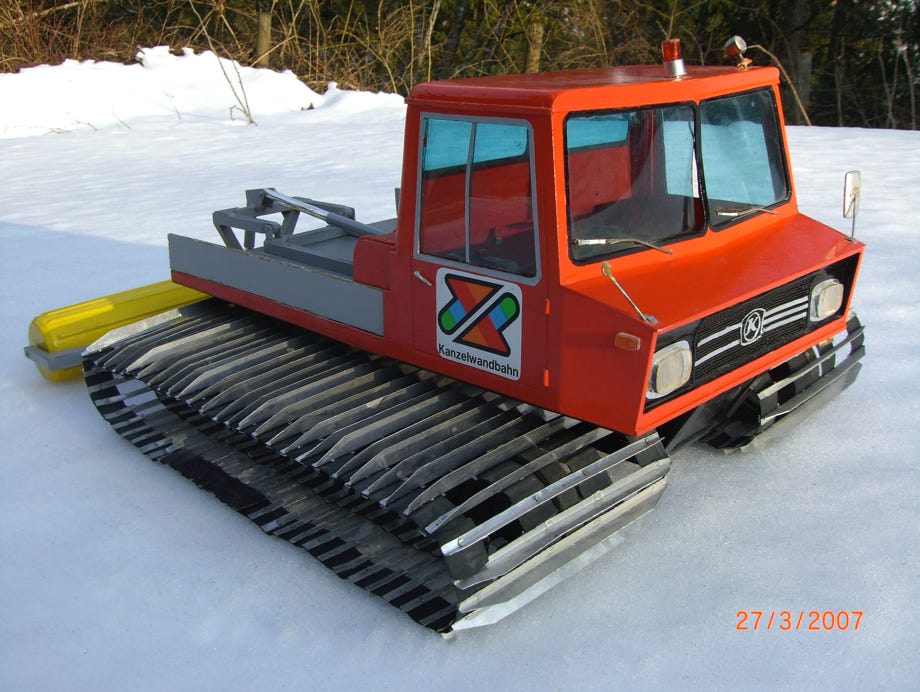
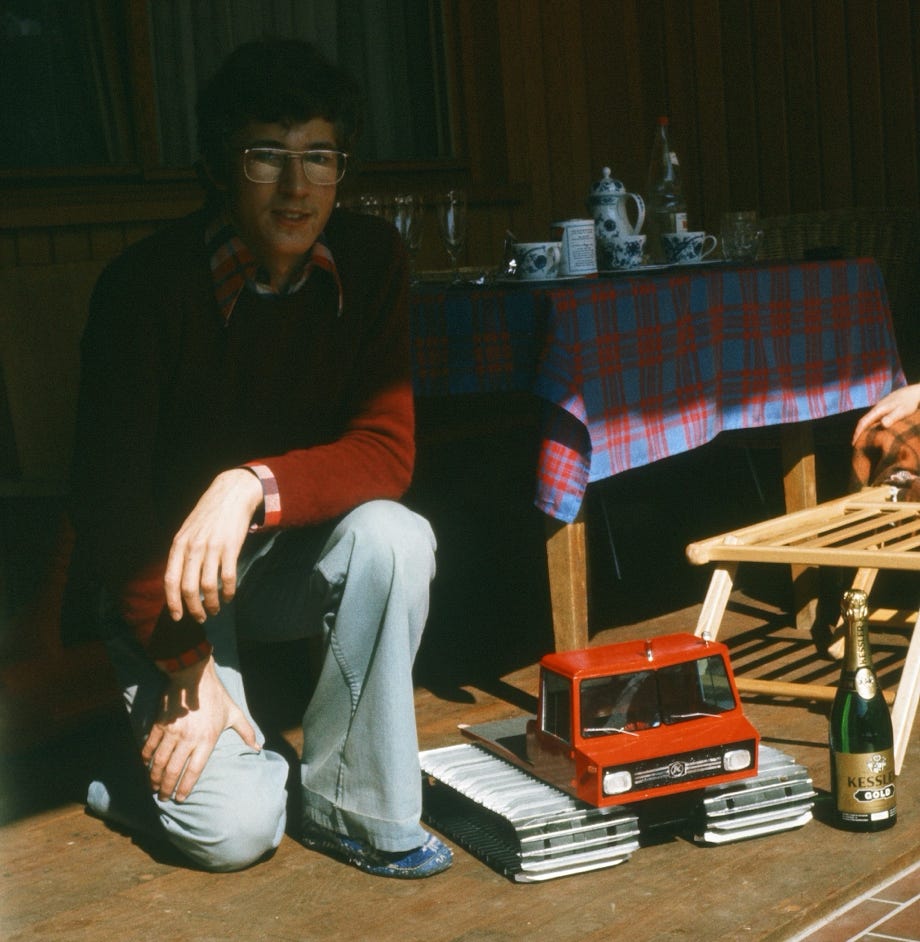
The driver cabin was built out of plywood and balsa wood, as well as the original chassis tub. Several different variants were tested for the gear box, at the end it was a worm drive from Fischer Technik. In the mid-seventies there was almost nothing available on the market for RC vehicles. The batteries were lead batteries with liquid acid, not sealed, so careful handling was necessary.
The radio control sets were costing a fortune back then. The servos were mounted on quick exchange mounts to easily move them from one model to the other. That's why every part on this model was made from scratch, using simple methods and often without knowing the acting forces and loads.
In May 2011 I built a platform using aluminum profiles and sheets and glued it to the tub. The original driver cabin has been repaired, and new window glasses were installed.
The PB145D was thus for the first time ready for action since more than 35 years. It took a couple more years before a new mechanism for lifting the trailing roller was made.
At Videos you'll find a video of the first test runs in 1975, as well as one of the current model.
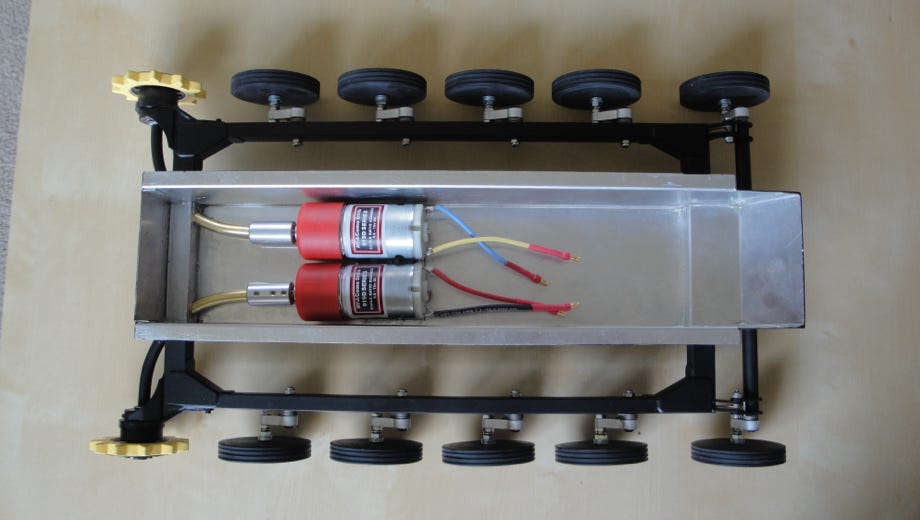
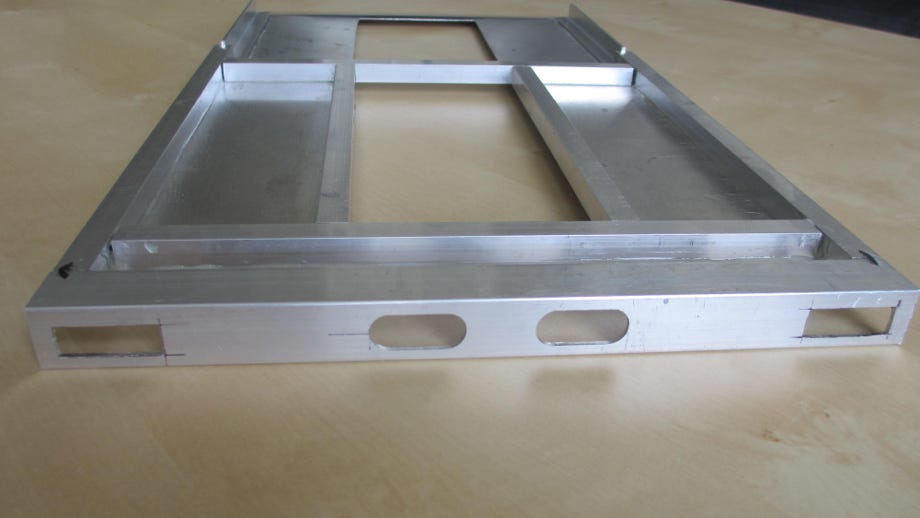
The new chassis based on Pistenking technology
The new platform made from aluminum
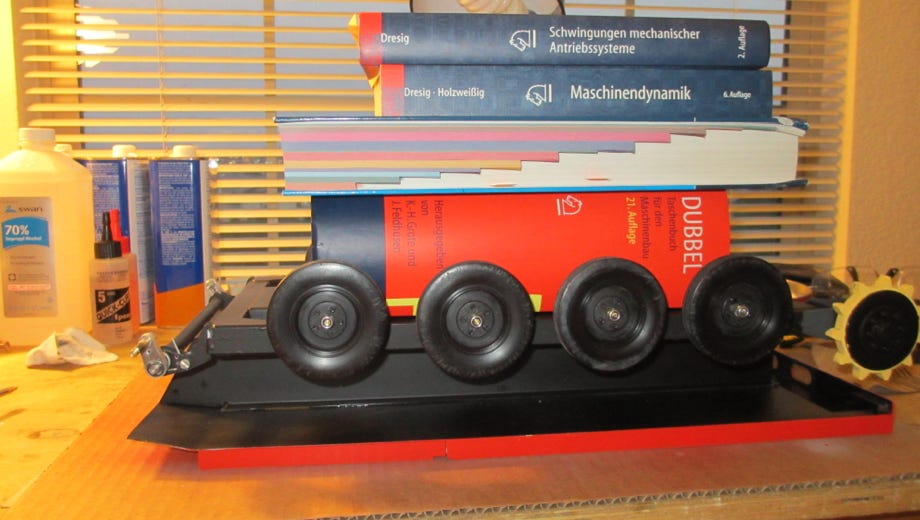
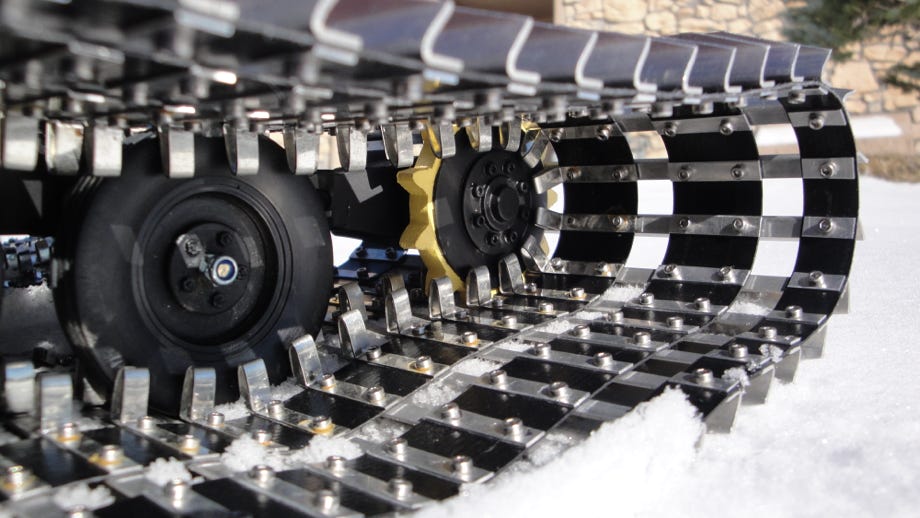
Glueing the platform to the tub
New "Ibex"-tracks
The mechanism for the trailing roller was made with a mix of techniques: soldering and glueing hollow brass profiles and aluminum profiles and parts. The newly purchased Stepcraft CNC milling machine came to a good use.
The trailing roller is still the original part from 1975, it is from wood and was wood turned by my dad in our carpenter workshop.
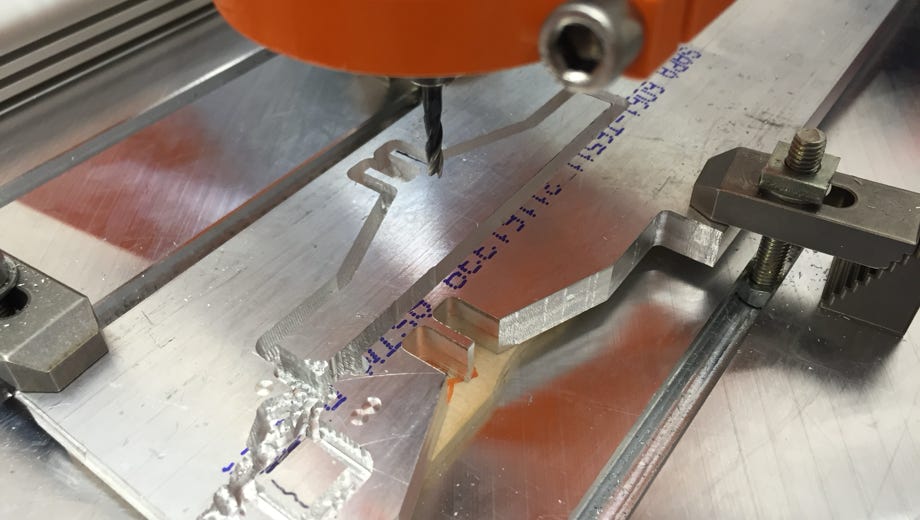
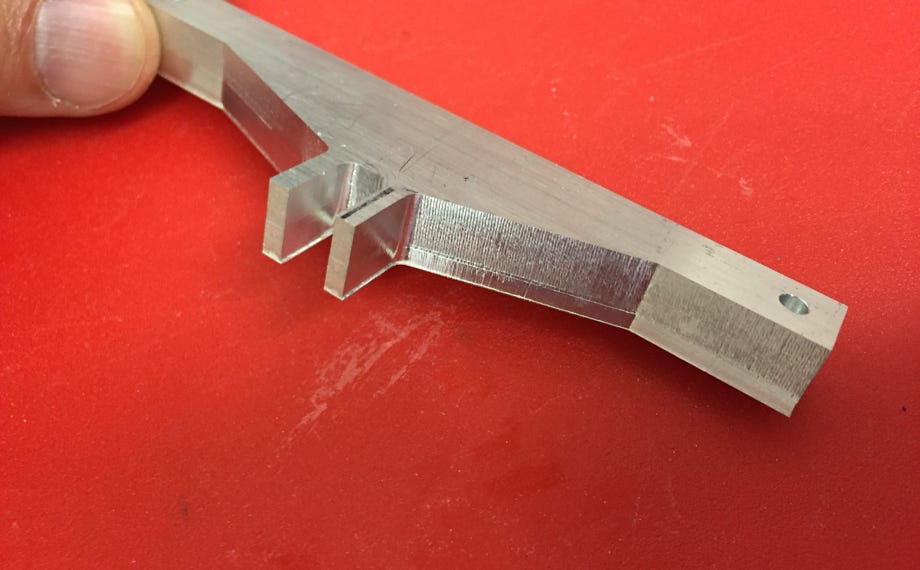
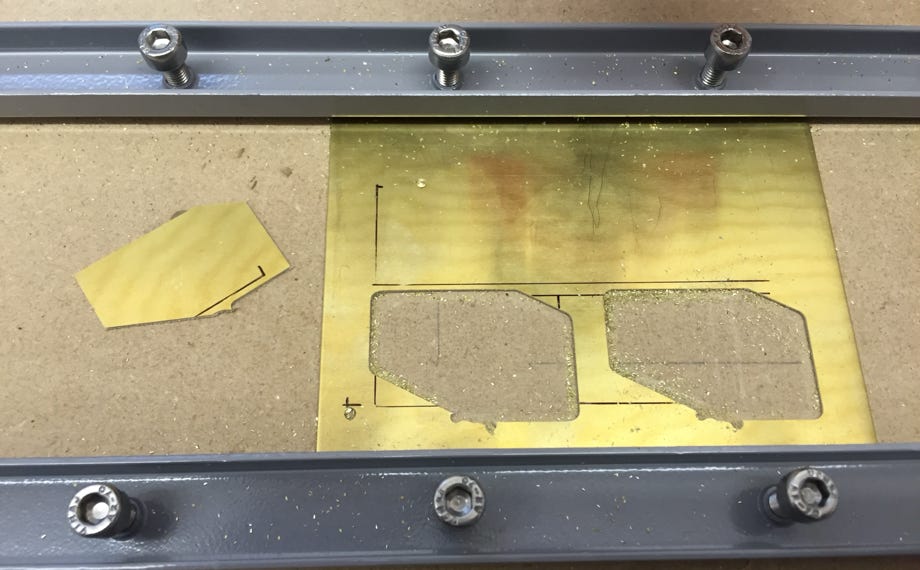
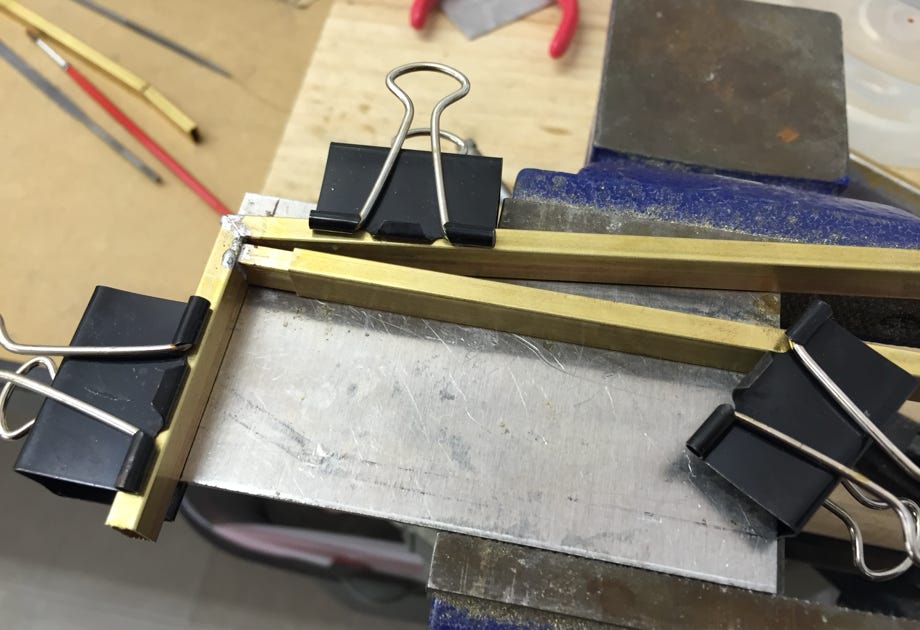
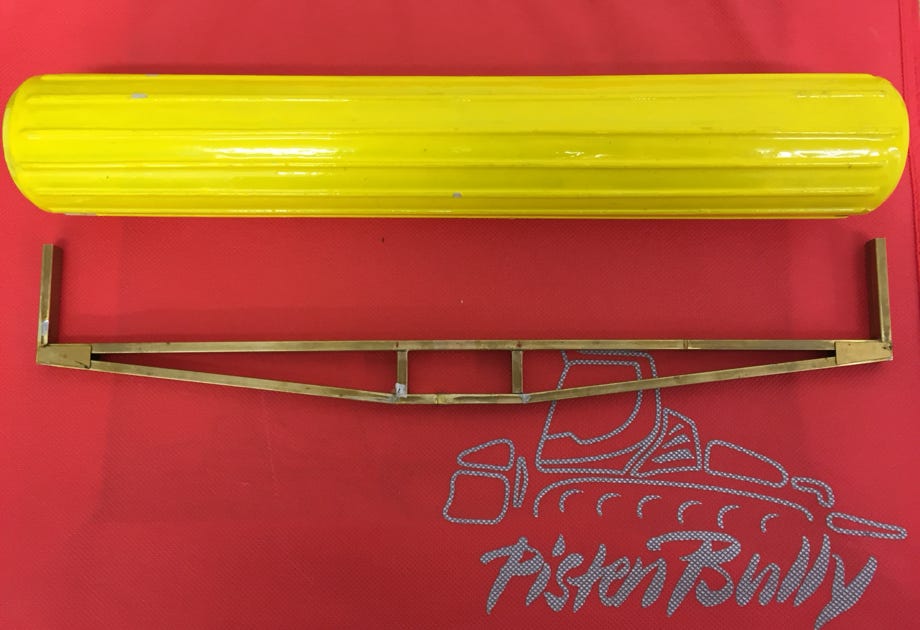
The picture to the right shows the parts before painting. The different materials are clearly visible.
For lifting a mechanically driven CTI-cylinder was chosen. It is from the first series and unfortunately not working really satisfactory. It often gets stuck in the end positions and its power is barely sufficient for the relatively heavy roller. Meanwhile I installed a CTI-cylinder of the second series. Now the lifting works without problems.
The compensation of ground rubs (floating position) is performed by the pressing cylinder, which has springs inside. These springs also serve as dampers when the roller is lifted and swings to the resting position.
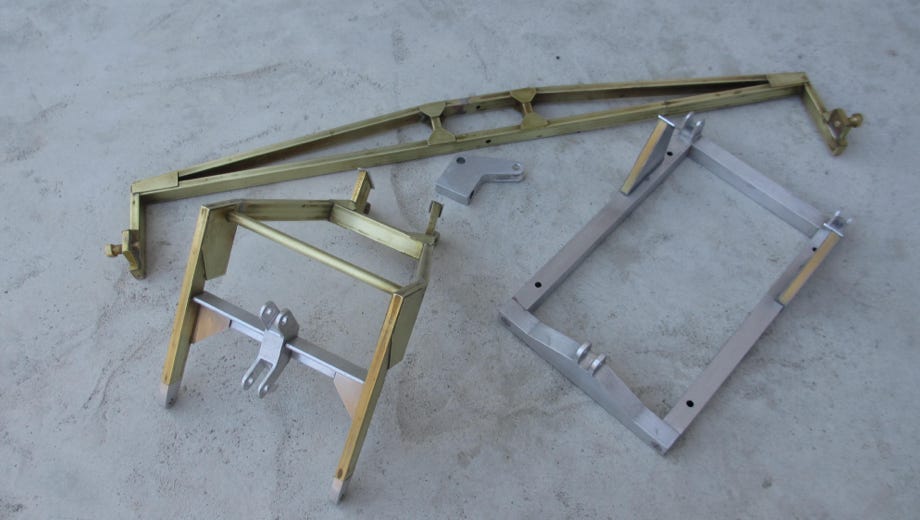
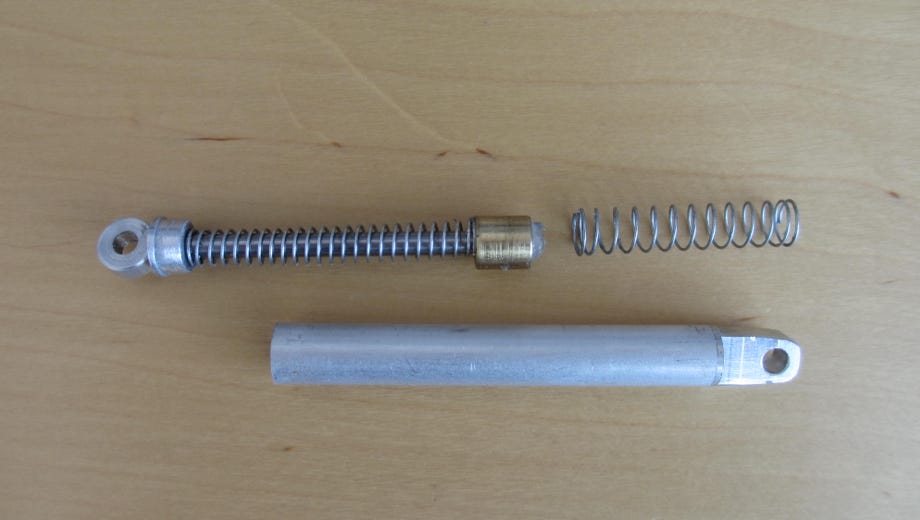
First test drives in snow were successful. The trailing roller creates the typical slope surface of the 70s. Most of the snow groomers back then did not have front blades, and were often just used to compress freshly fallen snow.
The hydraulic hoses were mounted after painting. The CTI cylinder gets its power from an "electrical hydraulic hose" which was made from a suitable coaxial cable. But this was quite some fumbling.
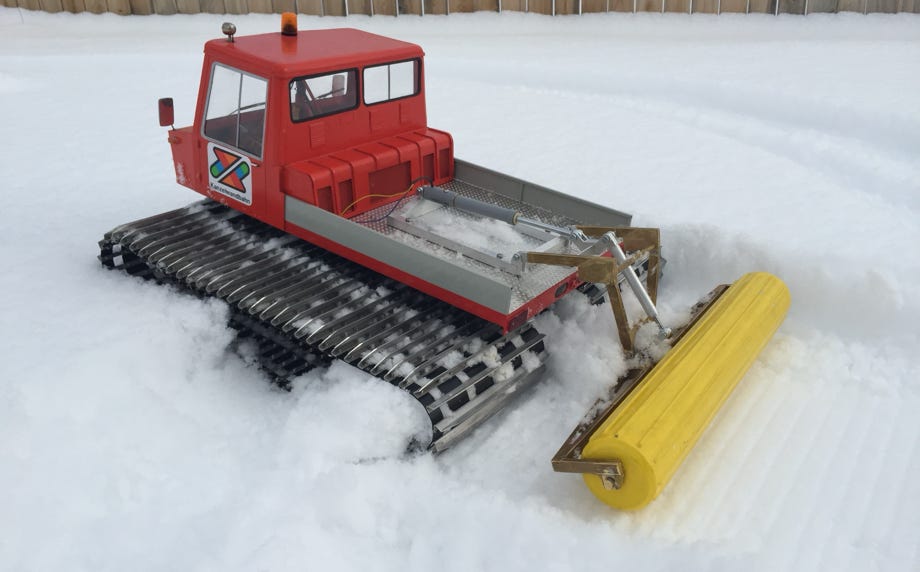
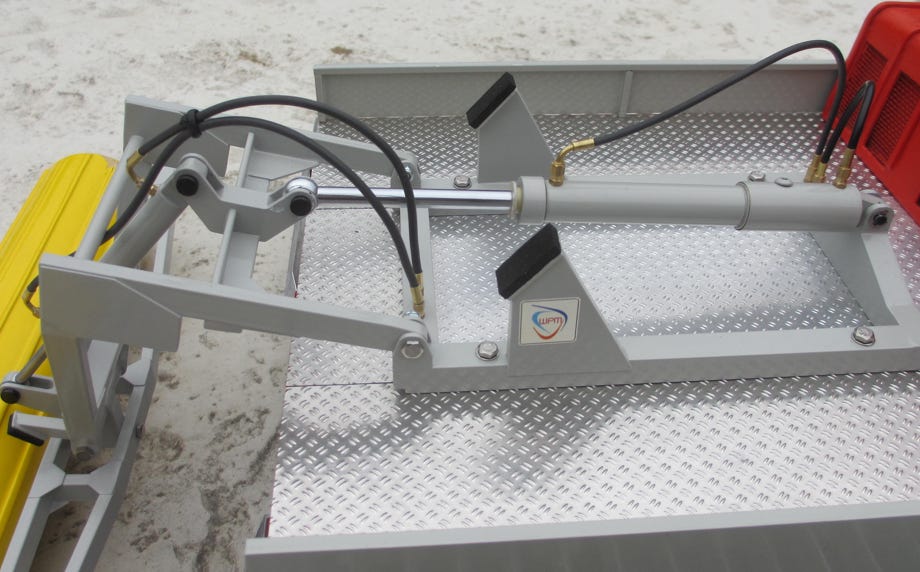
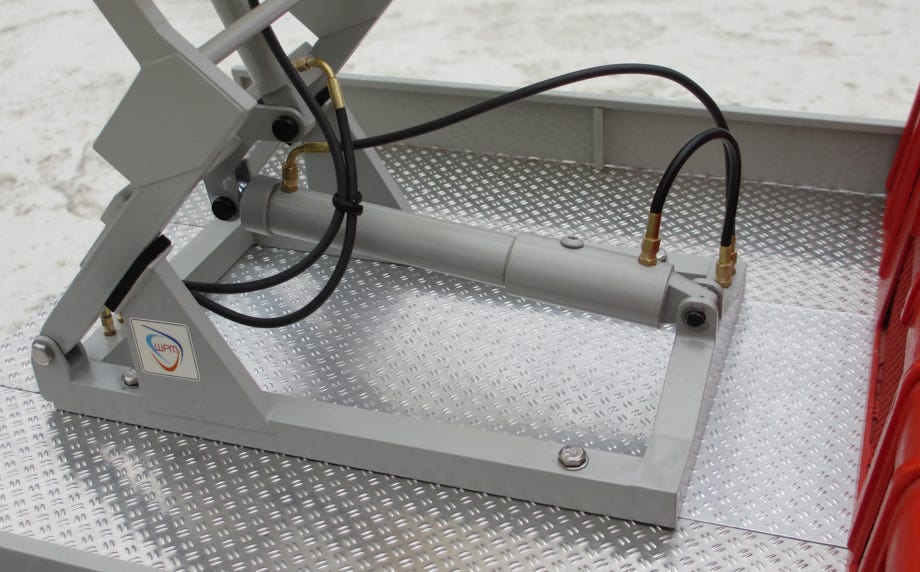
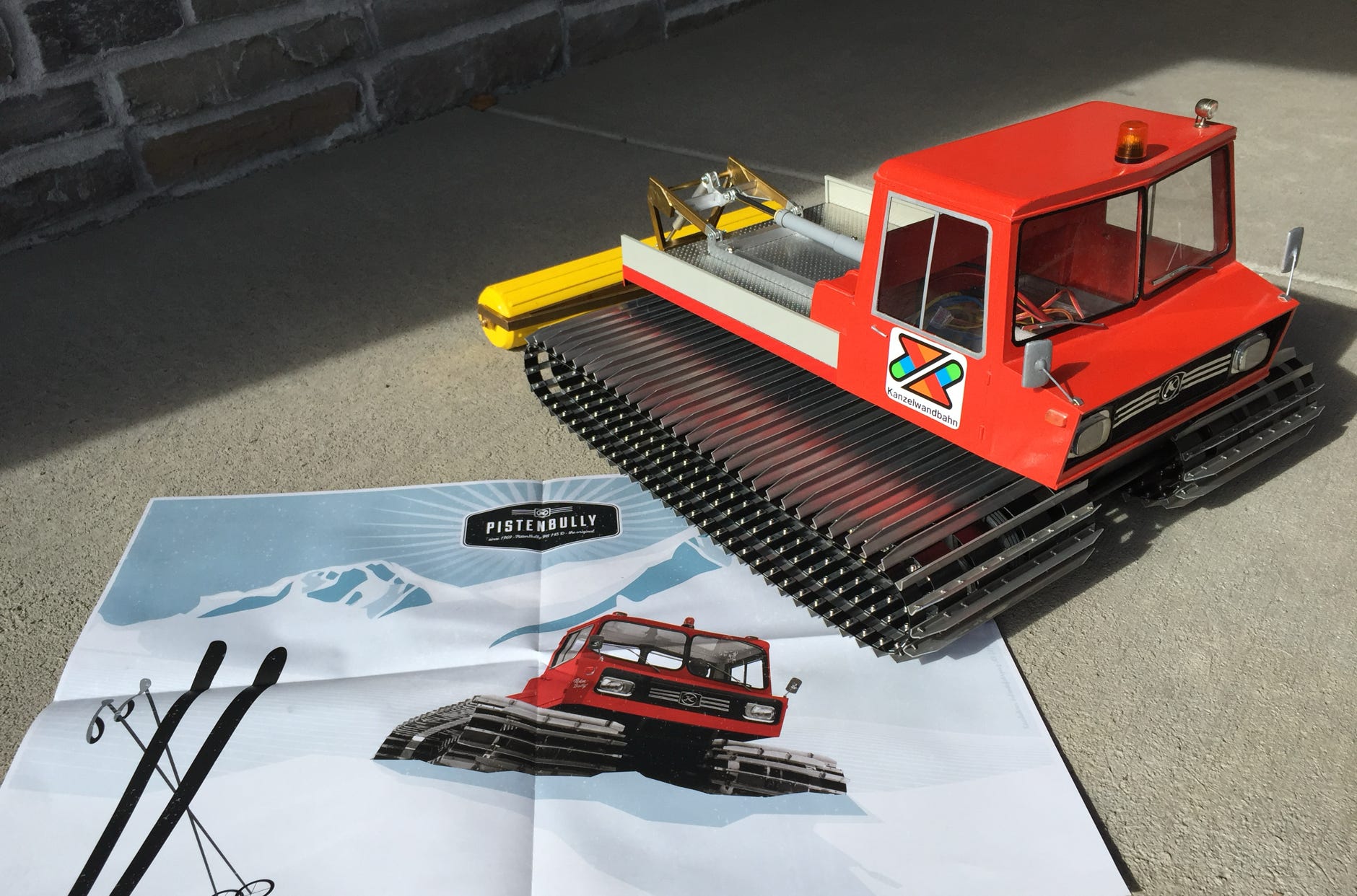
PB145D model with the "45 Years Cult" anniversary poster of the PistenBully News #4 2014/15
The german magazine Rad & Kette 1/2016 features an article by me about making my PB145D model and the modification. It's in German language.
The article can be downloaded as PDF file, with friendly permission by the magazine. Just click on the picture for downloading.
Diese Seite verwendet Cookies. Sie stimmen der Verwendung von Cookies durch Anklicken von “OK” zu. Nähere Informationen finden Sie in unseren Datenschutzbestimmungen.
This page is using Cookies. You are permitting the use of cookies by clicking on “OK”. More information can be found at our Privacy Protection.
OK